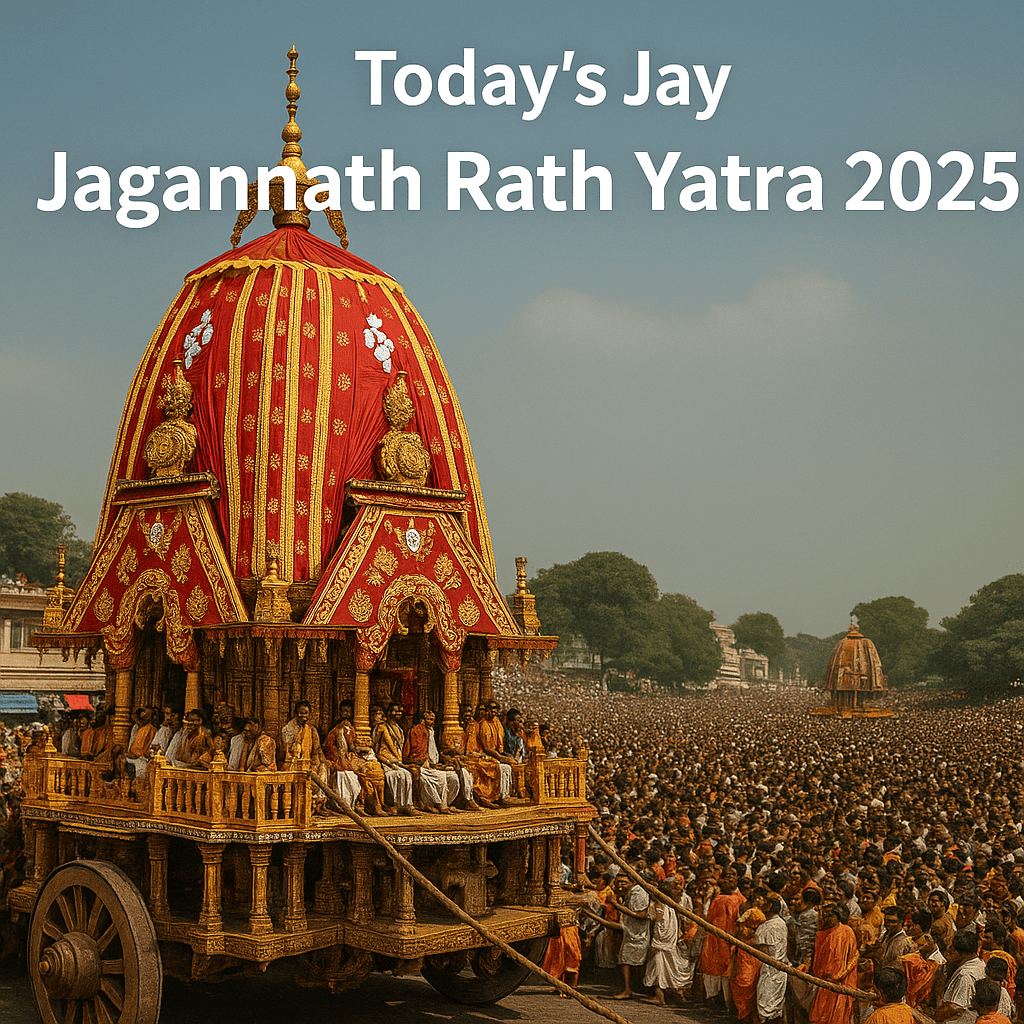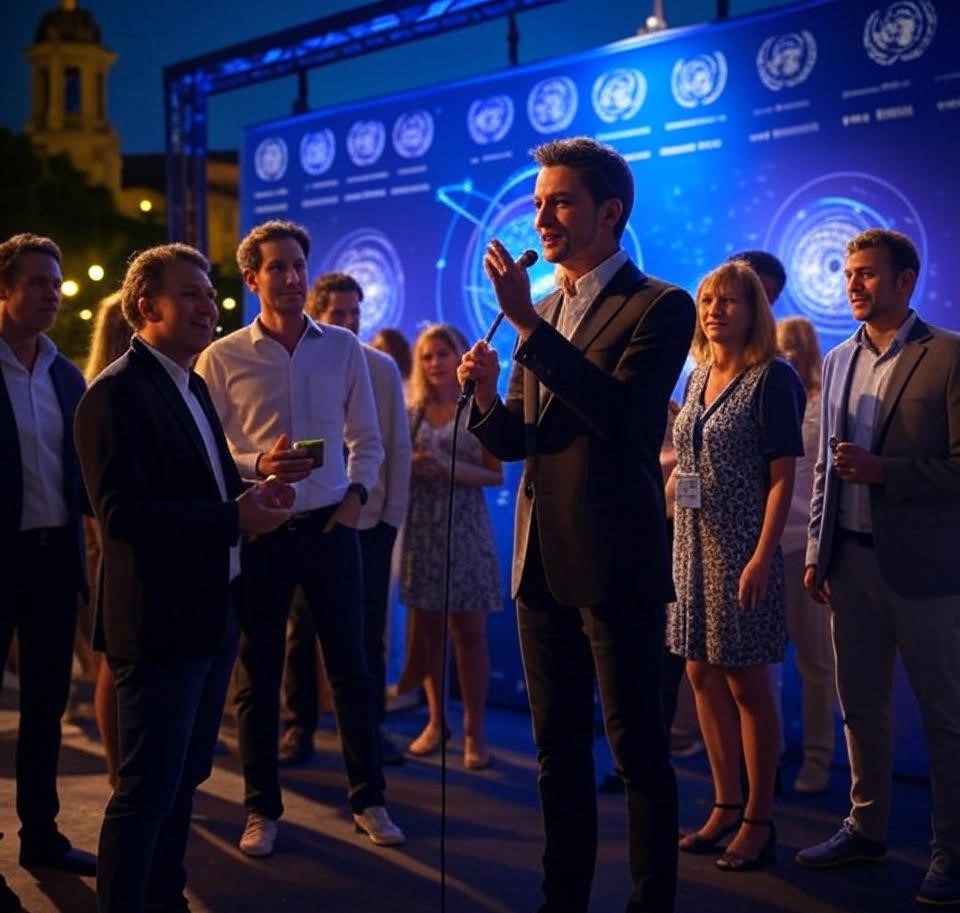Jay Jagannath Rath Yatra 2025: A Divine Journey of Devotion and Culture

Today, the sacred town of Puri, Odisha witnesses one of the grandest spectacles of spiritual celebration in India — the Jay Jagannath Rath Yatra 2025. Revered by millions across the globe, the Rath Yatra is not just a festival but a deeply symbolic journey that brings the divine closer to the people. This year’s celebration, falling on June 27, 2025, aligns with the second day of the waxing moon phase of the Hindu month Ashadha (Ashadha Shukla Dwitiya). The streets of Puri are pulsating with spiritual energy as devotees chant “Jai Jagannath!” and wait eagerly to pull the colossal, ornately decorated chariots of Lord Jagannath, Balabhadra, and Devi Subhadra from their sanctum at the Jagannath Temple to the Gundicha Temple, which is believed to be their maternal aunt’s abode.
The festival’s origins are ancient, deeply rooted in Vedic texts and Puranic stories. It is said that during this time, Lord Jagannath wishes to visit his birthplace, reminding devotees of Krishna’s human side. The divine siblings’ journey is reenacted every year through three towering wooden chariots — Nandighosa for Jagannath, Taladhwaja for Balabhadra, and Darpadalana for Subhadra — each meticulously crafted anew every year by traditional artisans. The ritual begins with Pahandi Bije, a ceremonial procession where the deities are gently swayed to the beat of conch shells and gongs. Once seated on their chariots, the Gajapati King of Puri performs the Chera Pahara ritual, sweeping the platforms with a golden broom — a humbling act that emphasizes that all are equal before the Lord, even a king.
As the sun rises, lakhs of devotees from all over India and abroad gather to participate in the sacred act of pulling the chariots through the Grand Road (Bada Danda). It is believed that even touching the ropes of the rath absolves one of sins and brings divine blessings. The energy is electric — people sing bhajans, dance in joy, offer prasad, and share the collective emotion of surrender. Despite the massive crowd, the spirit of order and devotion prevails, with Odisha Police, volunteers, and spiritual organizations ensuring smooth execution. The entire city transforms into a spiritual canvas painted with colors, chants, rituals, and overflowing faith.
This year’s Rath Yatra is even more significant, as it follows the return to full-scale public celebrations post-pandemic years, symbolizing renewal and hope. Not only Puri, but cities like Ahmedabad, Bhubaneswar, Prayagraj, and even London and New York, hold parallel celebrations through ISKCON and local temples, proving how Jagannath culture has transcended boundaries. In Puri, elaborate rituals such as Hera Panchami, Bahuda Yatra, Suna Besha, and Niladri Bijay will follow over the next 9 days, culminating in the return of the deities to the Jagannath Temple.
What makes the Rath Yatra unique is its accessibility — unlike other Hindu festivals where deities are hidden inside sanctums, here, they are brought out for everyone to see, regardless of caste, creed, or background. This openness reinforces the idea that divinity belongs to all. The festival represents more than religion; it is a celebration of inclusion, humility, tradition, and joy. Whether you’re physically present in Puri or watching a live stream from home, the emotional pull of the Rath Yatra reaches far and wide.
Today’s Rath Yatra isn’t merely a religious observance — it is a deeply emotional and cultural phenomenon. It connects the past with the present, mythology with modernity, and the personal with the universal. In a time when the world seeks peace and togetherness, the Jay Jagannath Rath Yatra 2025 reminds us of the power of shared devotion, cultural heritage, and the unshakable faith that binds us all in divine unity.
Today marks the auspicious Jay Jagannath Rath Yatra 2025, the iconic Chariot Festival held annually in Puri, Odisha. Also known as Shree Gundicha Yatra, this is more than a festival—it’s an immersive spiritual journey, a vibrant cultural legacy and a symbol of divine accessibility. Unlike other blogs, this is a fresh, human‑crafted narrative capturing the vivid devotion, the legend behind the celebration, and the modern-day experience.
Legends & Cultural Significance
Rath Yatra is deeply rooted in mythology and spiritual tradition. It embodies Jagannath’s symbolic journey to his maternal aunt’s temple—the Gundicha—echoing Krishna’s divine visit to his birthplace. Some traditions trace the origin to King Indradyumna’s devotion, while others link it to Krishna’s lore in the Dwapar Yuga
This ancient festival—mentioned in Puranas—has been celebrated for centuries, uniting millions through faith and communal oneness
The Divine Chariots & Rituals
Three majestic chariots stand ready today in Puri’s Grand Avenue:
- Nandighosa for Lord Jagannath,
- Taladhwaja for Balabhadra, and
- Darpadalana for Subhadra
Before sunrise, the Pahandi Bije ritual begins, where the deities are carried in an elaborate procession from the inner sanctum. The king of Puri participates in Chera Pahara, humbly sweeping the chariot platforms with a golden broom—symbolic of humility and equality.
Once the divine trio board the chariots, the grand rope-pulling begins—millions join, believing that pulling the chariots purifies the soul and grants blessings.










